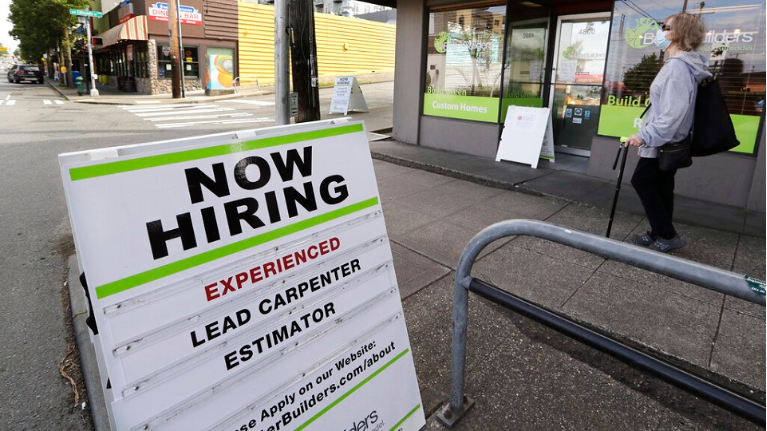WASHINGTON, DC — A major source of income for approximately 30 million unemployed people is set to come to an end next week.
What You Need To Know
- Federal unemployment benefits set to expire on July 25
- People have been receiving $600 a week in unemployment
- Congress could extend the extra benefits; however, Trump is not onboard
- Trump wants people back to work; proposing a "return-to-work" bonus instead
In March, Congress approved an additional $600 in weekly unemployment benefits as part of its relief package to help with the pandemic. That extra benefit ends next Friday unless it is renewed.
The unemployment insurance program has emerged as a crucial source of support at a time when the jobless rate is at Depression-era levels. In May, unemployment benefits made up 6% of all U.S. income, ahead of even Social Security, and up dramatically from February, when it amounted to just 0.1% of national income.
“The increase has likely done as much or more to limit widespread hardship like food insecurity, homelessness, utility cutoffs, and mental health challenges, as any provision Congress has enacted in response to the pandemic and recession,” said Indivar Dutta-Gupta, co-executive director of the Georgetown Center on Poverty & Inequality.
Congress enacted the extra payment for just four months, largely on the assumption that the viral outbreak would subside by late July and the economy would be well on the way to recovery. But confirmed case counts are rising in 40 states and 22 states are either reversing or pausing their reopening efforts, threatening to slow rehiring. The number of people seeking weekly jobless aid has leveled off at roughly 1.3 million, after falling steadily in May and early June.
Eliminating the extra payment would cut benefits for most recipients by 50 percent to 75 percent, depending on the size of each state’s unemployment benefit, which varies based on a worker’s prior income. Arizona’s maximum payment of $240 is near the low end, while Massachusetts is among the most generous, with a weekly maximum payment of more than $800.
Other measures intended to shore up business and household finances, such as one-time payments of $1,200 and a small business lending program, have also largely run their course. That could sharpen the impact of the pandemic-induced job losses, which have pushed the unemployment rate to 11.1 percent.
Another government rescue package is in the works and some sort of extended extra benefit is possible. Trump administration officials have expressed support for more aid and Senate Majority Leader Mitch McConnell, R-Ky., has signaled a willingness to compromise.
House Democrats passed legislation last month to extend the benefits to the end of January.
“They need to buy food. These are necessities. And when you use that money for necessities they inject demand into the economy and create jobs,” House Speaker Nancy Pelosi said Thursday.
The extra $600 was initially agreed upon because, for an average worker, it made their jobless benefits equal to their previous pay. Most states’ antiquated unemployment systems weren’t able to calculate a percentage increase in benefits that would have accomplished that for laid-off workers at different income levels.
Layoffs, since the pandemic struck, have been heavily concentrated in low-paying service industries such as restaurants, bars, and retailers, where workers make below-average incomes. That has made the $600 a boon to such workers, who are disproportionately Black and Hispanic. The Congressional Budget Office estimates that 42% of the people getting the extra $600 are nonwhite.
Many businesses say they have had trouble enticing their former employees to return to their jobs given the generous unemployment benefit. Yet government data shows that in May there were four unemployed people for every available job, a sign that the biggest challenge facing the economy is a lack of jobs, not workers.
Many state limits on evictions will expire by this fall, raising the risk that more unemployed could become homeless. Congress suspended evictions from public housing in late March but only until July 25. The COVID-19 Eviction Defense Project estimates that 19 million to 23 million people could be thrown out of their apartments by the end of September.
The additional aid has also likely boosted the economy by supporting Americans’ ability to spend. Sales at retail stores and restaurants rebounded in May and June to higher levels than a year ago. A new report suggests the additional aid enabled unemployed workers to actually increase their spending above pre-pandemic levels.



